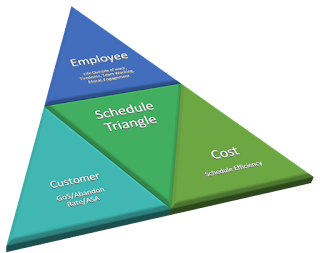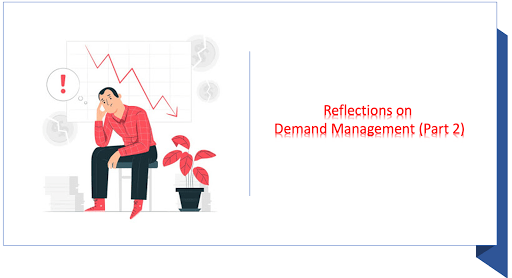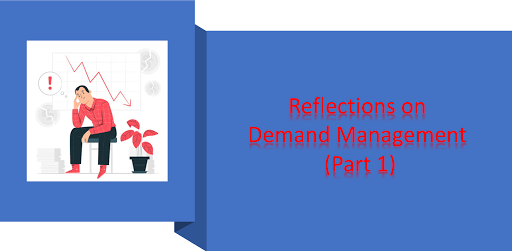Designing scheduling strategy is not a simple matter, there are many considerations to take into account and it’s often worth taking the time up front to consider all of the high level environmental inputs before you put pen to paper and design an actual shift pattern. Too many times WFM teams dive straight into the detail resulting in a trial and error approach that yo-yo’s between strategies and does more harm than good in the long run.
Your best place to start is high level, with your first consideration being where as a business do you want to position yourself in the scheduling triangle.
For example an employer with a first employer strategy might design shift patterns that their people think are great but this might come at the expense of either the customer, who at times now has to wait longer to be served, and/or at the expense of cost as you now have to over-staff in order to accommodate additional schedule in-flex. I have often found myself explaining – give me an unlimited budget and I can provide shift patterns that are both “best in class” for the employee and optimal for ensuring people are in the right place & time for the customer. However, I am yet to find a finance department that is willing to give me that luxury sadly.

Employee, Customer, and Cost are often very interlinked and it often not clear cut where the optimal balance is. For example a very efficient schedule pattern on paper might look cost efficient whilst also meeting customer needs, but if it then results in employee’s going sick or leaving the business then cost will eventually come under pressure as recruitment and overtime needs to kick in and the customer starts to suffer due to a lack of staffing. The good news is that there are schedule strategies available that tick all the boxes of the triangle at once. I have written about these strategies in previous posts – if you have not already read you can find them here:
SelfScheduling &
EquityScheduling.When you are deciding where you fit in the scheduling triangle, you should spend time considering and analyzing the following:
Your business type – for example an emergency service is more likely to be skewed towards the customer point of the triangle and put cost to one side as would a line of business that is carries a high net-worth revenue stream.
Workforce Demographics – Age, Gender, Ethnicity, Religion, Student, Family/Marital Status all play a big part in employee needs. Knowing this information is one thing, but don’t assume you know the needs of these groups of people, be sure to engage and speak to them personally, building up a collection of needs that you can later incorporate into your scheduling strategy is critical.
Facilities – how close are your employee to their place of work, building opening hours, canteen opening hrs, amenities near the office, work from home – to name just a few examples.
Customer needs – how consistent is the arrival of your customer demand throughout a 24hour period e.g. very large demand between 9am-10am and very low demand at 9pm-10pm is much more costly than if demand arrives evenly across the whole day. Also how susceptible demand is to vary at short notice is an important consideration and will determine how much short notice flex you need in your schedule strategy.
Spending time to understand where you as a business want to position your scheduling strategy is a very valuable exercise, one that will prevent yo-yo behavior, provides clarity and transparency to all involved and most importantly is the guiding star in providing direction as you dive deeper into the detail and design the shift patterns themselves.
I could not have said it any better than “The Cheshire Cat” in “Alice in Wonderland”:
Alice: Would you tell me, please, which way I ought to go from here?
The Cheshire Cat: That depends a good deal on where you want to get to.
Alice: I don’t much care where.
The Cheshire Cat: Then it doesn’t much matter which way you go.
Alice: …So long as I get somewhere.
The Cheshire Cat: Oh, you’re sure to do that, if only you walk long enough.







Responses